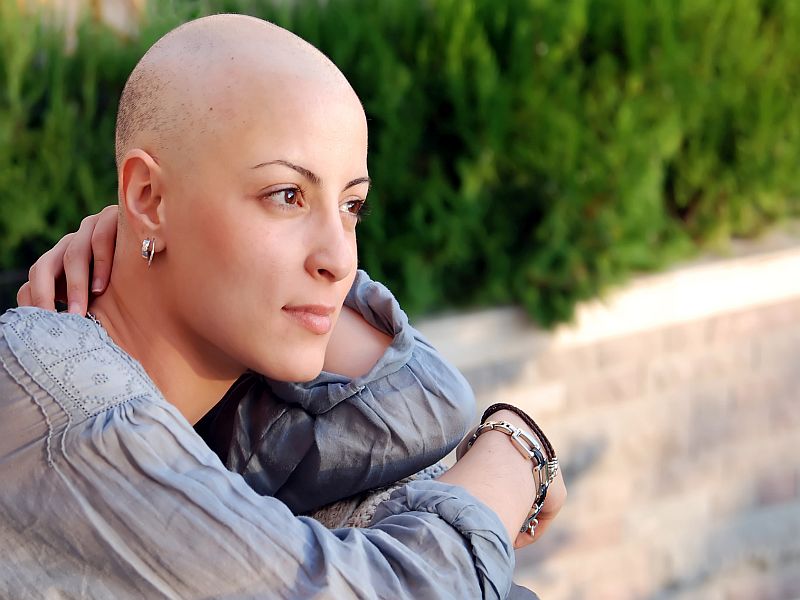
For women who have genetic mutations that increase their risk of breast and ovarian cancers, researchers have better defined at what age those gene flaws are most likely to cause trouble.
Knowing when gene-based cancer risks peak in a woman’s life will help doctors and patients decide when to take drastic steps such as removing a breast or the ovaries to prevent cancer, said study senior author Antonis Antoniou. He’s a researcher with the University of Cambridge’s Department of Public Health and Primary Care in England.
Breast cancer risk peaks around the 40s for BRCA1 mutation carriers and around the 50s for BRCA2 carriers, Antoniou said.
“This gives women more guidance as to when it’s safe to wait and when it’s time to go ahead and do the surgery,” said study co-author Dr. Mary Daly, founder and director of Fox Chase Cancer Center’s Risk Assessment Program in Philadelphia.
The researchers also found that family history plays a strong role in breast cancer risk outside of these genetic mutations.
“When they looked at the risk of breast cancer for BRCA 1 and 2, the risk increased if they had a strong family history of breast cancer,” Daly said. “Family history plays into it in some way. We didn’t see that with ovarian cancer.”
Up to now, women with BRCA1 and BRCA2 mutations have had to make treatment decisions based on studies that provided a less accurate assessment of cancer risk, the study authors said in background notes.
For example, estimates in previous studies of the cumulative risk of breast cancer ranged from 40 percent to 87 percent for BRCA1 carriers and between 27 and 84 percent for BRCA2 carriers, the researchers said.
To create a better estimate, the researchers tracked nearly 10,000 women carrying mutated versions of the BRCA1 and BRCA2 genes. These included more than 5,000 cancer-free women and more than 4,800 women previously diagnosed with breast or ovarian cancer.
During an average follow-up period of five years, 426 of the women were diagnosed with breast cancer, 109 with ovarian cancer, and 245 with breast cancer in the second breast.
The researchers concluded that about 72 percent of women carrying a faulty BRCA1 gene will develop breast cancer by age 80, and 44 percent will develop ovarian cancer.
A faulty BRCA2 gene will result in breast cancer for 69 percent of women by age 80 and ovarian cancer for 17 percent of women by the same age, the study showed.
The increase in breast cancer risk rose quickly in early adulthood and then plateaued, typically for the rest of a woman’s life. For women with a BRCA1 mutation, the plateau occurred around ages 31 to 40. For those with BRCA2 mutations, the plateau occurred about five to 10 years later, the study authors said.
The researchers also looked at the risk of developing breast cancer in the second breast. Over 20 years, the risk of a woman with a BRCA1 mutation developing breast cancer in her second breast was 41 percent. For BRCA2 carriers, the risk was 21 percent, the study found.
The new risk estimates are “probably a bit more accurate and a bit more reflective of what the real numbers are,” said Dr. Len Lichtenfeld, deputy chief medical officer for the American Cancer Society.
Women have to weigh the risk of cancer against the long-term impact of having their ovaries removed, Daly said. The reduction in female hormones caused by ovary removal can lead to increased risk of heart disease and loss of bone density.
“Some women may say, ‘I don’t want to have my ovaries taken out,’ and others may say, ‘Yesterday was too late,’ ” Lichtenfeld said. “This paper helps us have a more rational discussion of what the options and outcomes may be.”
Women with a family history of breast and ovarian cancer should have genetic testing performed, said Dr. Harold Burstein, a medical oncologist at the Dana-Farber Cancer Institute and Brigham and Women’s Hospital, both in Boston.
Debate continues over genetic screening for women with no cancer in their family history, however.
“If there is no family history and no personal history of cancer, the chance of finding a BRCA1/2 mutation is very low and we do not recommend testing for
the average woman,” said Burstein, who’s also affiliated with the American Society of Clinical Oncology.
But Dr. Stephanie Blank, director of women’s health for Mount Sinai Downtown-Chelsea Center in New York City, believes that more women should undergo genetic testing for BRCA1 and BRCA2 mutations.
“In general, we should be more inclusive rather than restrictive about who should be tested because not everybody fits the general profile of who you would expect to carry the mutation,” Blank said. “We’re surprised not infrequently.”
The new report was published June 20 in the Journal of the American Medical Association.
More information
For more about BRCA mutations, visit the U.S. National Cancer Institute.
Source: HealthDay

Leave a Reply